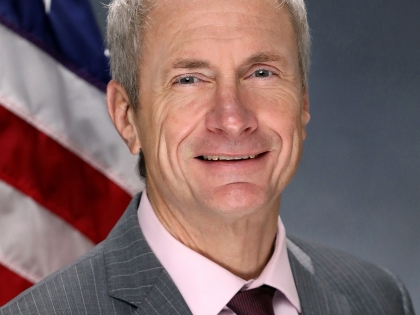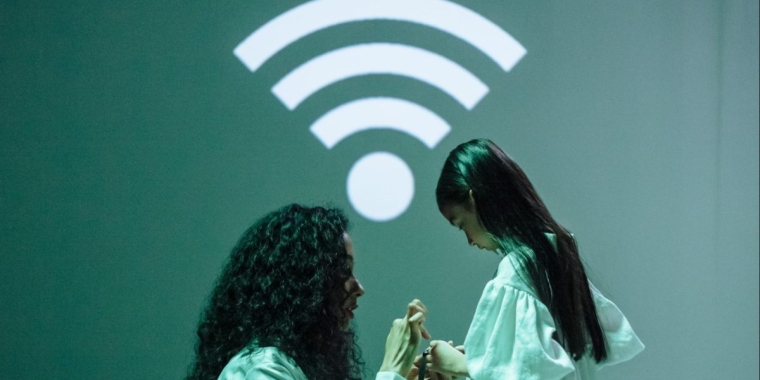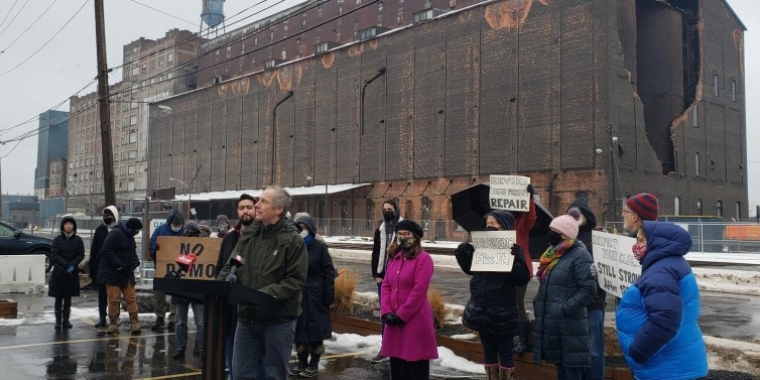
Armed with new data, policymakers eye internet expansion (Capitol Pressroom Interview)

Audio:
https://soundcloud.com/user-18109193/06-23-22-cpseg4-web
Transcript:
David Lombardo
As New York has grappled with the best way to ensure universal access to affordable, high speed internet, one of the initial challenges is understanding what areas of the state have access to the 21st century infrastructure making high-speed internet possible in the first place. If numbers touted by former Governor Andrew Cuomo are to be believed, all but a tiny fraction of New Yorkers had access to high-speed internet services. In light of the credulity of these numbers based on anecdotes from around New York, State regulators have completed a new mapping project designed to find the gaps in our service. To discuss the findings, we're joined on the Capitol Pressroom by State Senator Sean Ryan, a Buffalo-area Democrat who has been a vocal advocate for investments in high-speed internet. Welcome back to the show, Senator.
Senator Sean Ryan
Thanks for having me on to talk about this important but complicated issue.
David Lombardo
Before we turn to the new data that's been collected by state regulators and the Hochul administration, can you explain the problem with the data previously touted by the Cuomo administration?
Senator Sean Ryan
The Cuomo administration relied on data from the federal government that was very incomplete. In the federal government's mapping, if one house has internet in a census tract, then the whole census track is "covered." But the second problem with that analysis, even though it didn't show a complete picture -- there was also not a look, at all, on the quality or the cost of services. So, the former governor took the most broad-based measuring tool and declared victory in New York State after spending heaps and heaps of money, but that had very, very little outcome on it. So, recognizing that the federal mapping system was deficient, I pushed a bill through that got absorbed into the budget authorizing the PSC -- the Public Service Commission -- to do a complete granular map of New York State, but including in that the underserved, the not served at all -- the unserved -- and also the quality and the pricing. They released the maps last week; they are tremendous. It's the most complete view of internet in any state in the union. It's really cutting edge.
David Lombardo
Let's turn to that new analysis that was completed by the Hochul administration, which found that 97.4% of New York State address locations are served by high-speed broadband service providers. Are you satisfied, I guess, 1) with the methodology of this analysis? And 2) what does that top line number mean to you? Is it an important number or is it, like you said, the more granular detail that's the important stuff that we need to look at?
Senator Sean Ryan
I'm satisfied with the methodology, but the top line number just gives you something to look at more closely, right? So 97% sounds like a good number if you think of it right across the whole state, but the deficiencies aren't spread across the whole state. They're concentrated. The bulk of the addresses are in the upstate area. In the North Country, [almost] 10% of households are unserved, meaning no internet at all. In the Mohawk Valley and the Southern Tier, also very, very high numbers of the unserved. So, it really is a good map to say, "if we're going to pay for systems to be built out, now we know exactly what communities we need to build them out in." Up in the North Country -- Louis County, Hamilton County -- and in Western New York -- Cattaraugus County -- over a quarter of those addresses lack adequate coverage. So, it really does give you the tools necessary to now take the federal investment money, matched with the state money, to build out a system that would work for all New Yorkers.
David Lombardo
What, if anything, did this survey and tell us about the options New Yorkers have when it comes to purchasing internet services from from different providers? For instance, do we know whether people have affordable multiple options in their community, or does it seem like, for most people, it's a monopoly, essentially, in their area?
Senator Sean Ryan
The map reveals that communities that are covered on paper -- the deeper dive into the quality reveals that over 55% of New Yorkers have one option in internet. So there's no competition. We saw this as a result of the Public Service Commission's inaction over a decade ago when FiOS was built out throughout New York State. The companies made a conscious decision to really provide FiOS to suburban Upstate New York, but not urban. So, you've got clusters of people living in the upstate urban centers: Buffalo, Rochester, Syracuse -- the list goes on and on -- that only have one service choice and it's usually through cable, and cable really is far from the cutting edge way to deliver internet service. Believe it or not, we found that areas (with the) lowest income had the least number of choices, and the highest internet fees with the lowest quality of service. It's sort of the triple whammy for several large swaths of New York State.
David Lombardo
For listeners who are just joining us, you're listening to the Capitol Pressroom, and we're speaking with State Senator Sean Ryan, a Buffalo-area Democrat who pushed for -- and secured -- money in the state budget to do a new analysis of the high speed internet availability in New York. Now that we have this data though, Senator, what should we do with it? You mentioned earlier that we are in the process of spending state and federal dollars -- more than a billion dollars -- to expand access. So, how should this report influence that spending as well as future initiatives?
Senator Sean Ryan
Part the budget where we put this together -- we put a plan together saying, "okay, we're going to get the data, and here's how we're going to make the data influence our spending of that." So, we're going to prioritize unserved areas first, and then also underserved areas second. So, we know where we can point that money, and we also have a bias in our funding to bias fiber optic versus cable. Fiber optic is just a way better service, and that's the service that was built out mostly through suburban New York State almost a decade ago. Broadband through cable is -- you're sharing bandwidth, and it slows down the more people get on it. It relies on a complicated system of amplifiers mounted on telephone poles. What it really resulted in is most consumers during the pandemic realized that the broadband that they were paying for wasn't working. Really slow speeds. People will tell you, "oh yeah, I have good broadband until three o'clock when the kids get home from school, but then suddenly my broadband doesn't really work at all." I myself live in a house where at one point, during the pandemic, we had four people trying to either study or work their jobs off of the cable broadband, and boy, it was not up to the task. But my neighboring communities I also represent in suburban Buffalo, they have a choice between fiber optic or cable and the people who have fiber optic, they were able to have four people in the house working. We know which technology is better, so we are going to use this money to -- essentially in the application process, you get points for going for fiber optic versus the antiquated cable system. But what it all really points to -- we have complete coverage in New York State for electricity, for water, for gas in areas where you gas for heating, and we figured out how to make it so that 100% of the homes can get quality, reliable electricity. And we did that through regulation. So, ultimately, the PSC is going to have to step in and regulate the broadband providers in New York State. That's the only way we're going to ensure that the consumers get what they're paying for.
Daivd Lombardo
But the PSC's oversight over telecommunications in general is something that's really not that strong. They have power over -- like you're talking about -- water, energy utilities, but do they actually have that much authority to tell telecoms what to do?
Senator Sean Ryan
New federal rules have come out to give the states explicit authority on there. I have a bill in the Senate, and Assemblywoman Nily Rosic has it in the Assembly, that would give the PSC the authority to regulate broadband, because this is how we hold utilities accountable. We have a monopolistic system that's already been set up in New York State where, as I said, over half of the households have only one choice for broadband providers, and that's where regulation is really helpful: when you have a monopolistic situation. So, we want to make it so that if you have a problem with the internet, it's not you fighting a massive national company. Just think of how you settle disputes with your electricity provider. The PSC has rules established for it. Right now, it's kind of the Wild West with most of the providers and, as we've seen, it's not good for consumers. More and more consumers are relying on the internet to provide healthcare -- they do telehealth, people do counseling over over the [internet] -- people work at home; and in large areas of New York State, those things just aren't possible, so you're really not integrated into the economy, into society, unless you have reliable internet. And that's been quite a change, right? Not long ago, people viewed this as some sort of luxury. Not anymore.
David Lombardo
The state's ConnectALL initiative includes about $300 million in state funding and more than a billion dollars in federal funding, essentially subsidizing the private telecommunications businesses. Do you feel like they have enough skin in the game when it comes to this mission of promoting access to high-speed services? Because it seems, at least traditionally, they've only had an interest in expanding access where it was profitable to them.
Senator Sean Ryan
Yep, and this goes back to the monopoly, right? When they split up the state between who's going to get fiber optic to their home or business and who's going to get cable, essentially, the providers agreed not to compete with one another. That really is the definition of monopolistic practices. We hope, with these new regulations, that we're going to make the providers get more skin in the game, but at the end of the day, whether it's sooner or later, we are going to start regulating the internet just like we do other utilities. That's going to be how we make sure it all works. But, before we have the regulation, we are going to make sure that are built out is done in the best way possible. For the previous decade under the previous administration, they did spend a lot of money, but the results were nothing to write home about. They were poor results. We think we're going to create the best system possible by putting a lot of regulations on how this money is spent. But it's always going to be this constant rub between -- you're empowering private companies to build out a system, but are we going to do with regulation to protect consumers or are we going to just leave it companies? Our history has shown that if you leave it to the companies, you're not going to like the results.
David Lombardo
Well, finally then, as you try to regulate the telecommunications industry and we make this billion dollar plus investment in access, what will be legislature's role be in terms of making sure this is all going smoothly? Should we expect joint legislative hearings? Will the Senate be holding some sort of hearings? What sort of accountability will we get from lawmakers?
Senator Sean Ryan
Well, we put some accountability into the expenditure. The federal money could have come to New York State with no oversight attached, leaving it right to the executive. We put a lot of strings on that money that have reporting requirements, but also a framework of best practices to follow. This is going to be a multi-year process and the executive, the legislature, the PSC, and private companies are all going to be working together; sometimes with sharp elbows, but conflict is inherent in this type of system if, in fact, you're striving for the best results for the consumer. So, this is going to be an issue that's going to stay hot for several years. Last fall, I went around the state with Assemblywoman Rozic; we talked to different communities, and it was really surprising that the same complaints that people have on the West Side of Buffalo are the same complaints people have in Glens Falls or in the Lake Placid area: unreliable internet. It's either, "I don't have it at all," or "I have it, and I'm paying for it, but I'm not getting what I pay for." So, there there does seem to be acknowledgement that the system that we've cobbled together with a deregulated telecom industry hasn't really proven to build out a good broadband system in New York State.
David Lombardo
We've been speaking with State Senator Sean Ryan, he is a Buffalo area Democrat. Senator, thank you so much for making the time. I really appreciate it.
Senator Sean Ryan
Thanks for talking about this important issue. Always a pleasure to talk with you.


